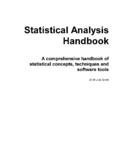Transcription of Math 141 - Lecture 24: Model Comparisons and …
1 Math 141. Lecture 24: Model Comparisons and The F-test Albyn Jones1. 1 Library 304. jones/courses/141. Albyn Jones Math 141. Nested Models Two linear models are Nested if one (the restricted Model ) is obtained from the other (the full Model ) by setting some parameters to zero ( removing terms from the Model ), or some other constraint on the parameters. We can compare nested models fit to the same dataset with the F test. Albyn Jones Math 141. Example # Full Model Mfull <- lm(Y X + W + Z + T, data = MyDataSet). # Restricted Model Mres <- lm(Y X + W, data = MyDataSet ). Fitting the restricted Model is equivalent to forcing Z = T = 0. in the full Model . Albyn Jones Math 141. Comparing Nested Models The crucial question is whether the residual sum of squares for the restricted Model (RSSR ) is substantially larger than the residual sum of squares for the full Model (RSSF ). R. A. Fisher worked out the distribution of a ratio of the two under the null hypothesis that the restricted Model is correct, which typically corresponds to the statement that some parameters are zero.
2 As usual, this story depends on the residuals having a at least an approximately normal distribution. Albyn Jones Math 141. The F-Test Assuming Model validity, the F-ratio (F is for Fisher, by the way). (RSSR RSSF )/(dfR dfF ). FdfN ,dfF =. RSSF /dfF. has an F distribution with degrees of freedom (dfN , dfF ) if the restricted Model is correct. Note: dfN = dfR dfF , and dfF and dfR are residual df from the two models. Reject: if F > qf (.95, dfN , dfF ). Note: dfR dfF is always the number of constraints on the parameters that converts the full Model to the restricted Model . Albyn Jones Math 141. The F density F(5,20) density density Rejection Region 0 1 2 3 4 5. X. Albyn Jones Math 141. Analogy F(5,20) density vs Chisq(5)/5. density 0 1 2 3 4 5. X. Fk,n is to 2k as tn is to N(0, 1). The denominator estimates 2 . If we knew 2 , the ratio would have a 2 distribution. Albyn Jones Math 141. Connection to the t Distribution: F1,k is tk2.
3 Lm(formula = ht18 ht2, data = Berkeley). Coefficients: Estimate Std. Error t value Pr(>|t|). (Intercept) ht2 --- Residual standard error: on 56 degrees of freedom F-statistic: on 1 and 56 DF, p-value: > 2. [1] Albyn Jones Math 141. Example, CPS wage data summary Call: lm(formula = wage race*sex + educ + age + union, data = CPS). Coefficients: Estimate Std. Error t value Pr(>|t|). (Intercept) < .001. raceW sexM educ < .001. age < .001. unionUnion raceW:sexM Albyn Jones Math 141. Plot Residuals! CPS wage residuals . 30. 20. residuals( ).. 10.. 0.. 10.. 0 5 10 15. fitted( ). What Next? Albyn Jones Math 141. Example, CPS log(wage) data summary Call: lm(formula = log(wage) race*sex + educ +. age + union, data = CPS). Coefficients: Estimate Std. Error t value Pr(>|t|). (Intercept) raceW sexM educ < .01. age < .01. unionUnion < .01. raceW:sexM Residual standard error: on 527 df Albyn Jones Math 141. Plot Residuals Again!
4 CPS log wage residuals 2.. 1.. residuals( ).. 0.. 1.. 2.. fitted( ). Better? Albyn Jones Math 141. Looking for a parsimonius Model ? None of the coefficients for race, sex, and the race*sex interaction were statisticially significantly different from zero. Let's fit a restricted Model , dropping those non-significant explanatory variables. Albyn Jones Math 141. Example, CPS log(wage) Restricted Model Call: lm(formula = log(wage) educ + age + union, data = CPS). Coefficients: Estimate Std. Error t value Pr(>|t|). (Intercept) < .01. educ < .01. age < .01. unionUnion < .01. Residual standard error: on 530 df Albyn Jones Math 141. Model comparison > anova( , ). Analysis of Variance Table Model 1: log(wage) educ + age + union Model 2: log(wage) race*sex + educ + age + union RSS Df Sum of Sq F Pr(>F). 1 530 2 527 3 Say WHAT? None of the omitted coefficients were statistically significantly different from 0! How can this happen?
5 Albyn Jones Math 141. The Null and Alternative Hypotheses What is H0 ? The restricted Model is correct. Informally: the restricted Model fits as well as the full Model . Formally: H0 : coefficients for the omitted terms are all 0. Formally: H1 : at least one omitted coefficient is not zero. Albyn Jones Math 141. Important! Individual t-tests are testing a null hypothesis for a single coefficient H0 : = 0. given we have controlled for the other variables in the Model ! Albyn Jones Math 141. What was missing? formula = log(wage) sex + educ + age + union, data = CPS). Coefficients: Estimate Std. Error t value Pr(>|t|). (Intercept) sexM < .001. educ < .001. age < .001. unionUnion < .001. Albyn Jones Math 141. What happened? The race*sex interaction was a distraction! > cor(sex=="M",sex=="M" & race=="W"). [1] Strongly correlated explanatory variables can be distractors, each does part of the work of predicting the response, neither seems important when the other is included.
6 Albyn Jones Math 141. Interpretation The coefficient for the dummy variable for Males was about .23. What does that mean? All other factors held equal, the difference between log(wage). for males and log(wage) for females is .23: log(W ) = OtherStuff + .23 sexM. Therefore W = eOtherStuff +.23 sexM = eOtherStuff sexM. The dummy variable sexM is 1 for males and 0 for females, so the difference is the multiplicative factor Conclusion: Males with the same education level, age and Union status get paid about 26% more than corresponding females with the same covariate values. Albyn Jones Math 141. R will try to prevent silliness > anova( , ). Analysis of Variance Table Response: log(wage). Df Sum Sq Mean Sq F value Pr(>F). educ 1 < .001. age 1 < .001. union 1 < .001. Residuals 530 --- Warning message: In (object, ..) : models with response "wage" removed because response differs from Model 1. Albyn Jones Math 141.
7 Michelson's Data, full Model > summary(MF). Call: lm(formula = Speed Run, data = Michelson). Coefficients: Estimate Std. Error t value Pr(>|t|). (Intercept) Run2 Run3 Run4 Run5 Albyn Jones Math 141. Michelson's Data, restricted Model > Run1 <- Michelson$Run == 1. > summary(MR). Call: lm(formula = Speed Run1, data = Michelson). Coefficients: Estimate Std. Error t value Pr(>|t|). (Intercept) +05 +00 < 2e-16. Run1 TRUE +01 +01 Albyn Jones Math 141. Model comparison ! > anova(MR,MF). Analysis of Variance Table Model 1: Speed Run1. Model 2: Speed Run RSS Df Sum of Sq F Pr(>F). 1 98 537935. 2 95 523510 3 14425 What was H0 , and what do we conclude? Albyn Jones Math 141. Summary The F test compares nested models fit to the same dataset. It allows us to test hypotheses involving multiple parameters simultaneously. If you wish to conclude that a collection of coefficients are all zero, or none of a subset of your explanatory variables predict the response, an F-test is the appropriate tool.
8 Albyn Jones Math 141.
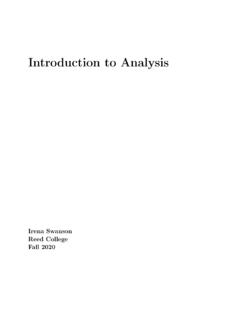
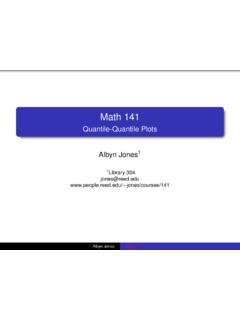

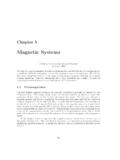
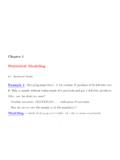
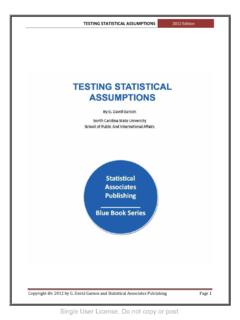


![arXiv:1406.1078v3 [cs.CL] 3 Sep 2014](/cache/no-preview.jpg)
